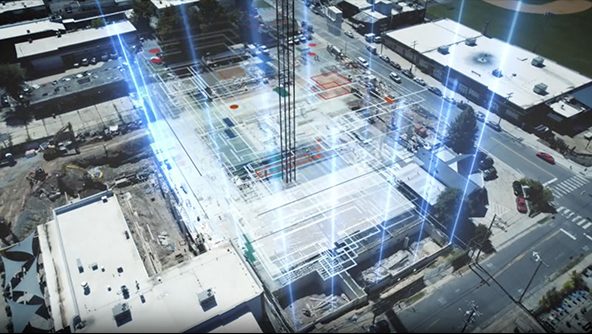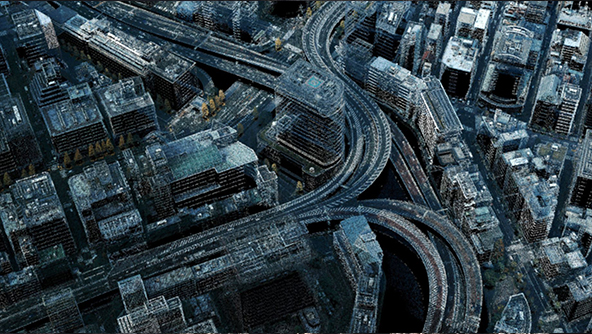
From Hard Hats to High-Tech
Shaping the future of construction.
Meet Sarah, a civil engineer working towards creating sustainable and efficient infrastructures. Right now, she's tackling a big project: designing a new building in the heart of a bustling city.
To ensure success, Sarah must meticulously oversee every aspect of the construction site, both in 2D and 3D, keeping a close eye on what's happening above and below ground.
With many construction projects troubled by budget overruns and delays, often due to disconnected information and the industry's slow pace of digitalization, how will Sarah overcome the challenge?
Construction insight is in sightEnter Hexagon's Intelligence for Buildings, a game-changer in how buildings are planned, designed, and constructed. With Hexagon's unique blend of sensors and specialized software, data is seamlessly captured, connected, and visualized, enhancing the coordination between people, machines, and materials throughout the construction phases and beyond.
Explore the phases below.
Design Phase:
One of the first steps in every construction project is modeling the building design. Using digital tools, detailed blueprints and models, known as Building Information Models (BIM), are created. These digital representations enhance visualization and enable the team to anticipate potential challenges and devise effective solutions early in the process.

Construction Phase:
As construction begins, precision becomes paramount. Digital measurement and monitoring solutions ensure that every aspect of the project, from alignment to material usage, is monitored and optimized for efficiency and quality. This real-time data empowers project stakeholders to make informed decisions and address issues promptly, minimizing the risk of delays and cost overruns.
One typical use case in the construction phase is to monitor the progress and check the quality parameters of the constructed parts. This is done by performing routine LiDAR scans of the under-construction site and comparing them with the BIM models. High-precision scanners are used for this purpose, and the choice of scanner depends on the nature and size of the construction site. Software is used to process the scans captured from these scanners, cleaning them and stitching them together if needed. Finally, another software is used to compare the scan with the BIM model and generate reports on progress and quality metrics.
A construction camera service is used for real-time project visibility, to monitor multiple sites and projects remotely, and to receive alerts. The service also helps send updates to stakeholders on construction site progress by creating time-lapse videos.

Operations and Maintenance Phase:
The building stands tall, a testament to collaborative effort. Digital solutions extend beyond the construction phase, allowing for photographs, videos, and point cloud scans of the building throughout its development, tagged to floor plans and designs. These asset management tools provide complete transparency of the finished building, optimizing operations, maintenance, safety, and resiliency.
This transparency benefits all stakeholders. For instance, electrical and plumbing maintenance staff can easily locate specific items and troubleshoot problems using the documented photographs tagged to the building floor plan. The captured data also helps meet compliance norms and enables the identification of potential problems through intelligent insights.

Welcome to the construction revolution
The construction industry is undergoing a digital revolution. By adopting these advancements, professionals like Sarah are creating highly accurate building designs, optimizing operations, and enhancing collaboration. This increased transparency throughout the building lifecycle is paving the way for a more sustainable and connected future.
This is Hexagon's Intelligence of Things, reinventing everything from ground-up.



